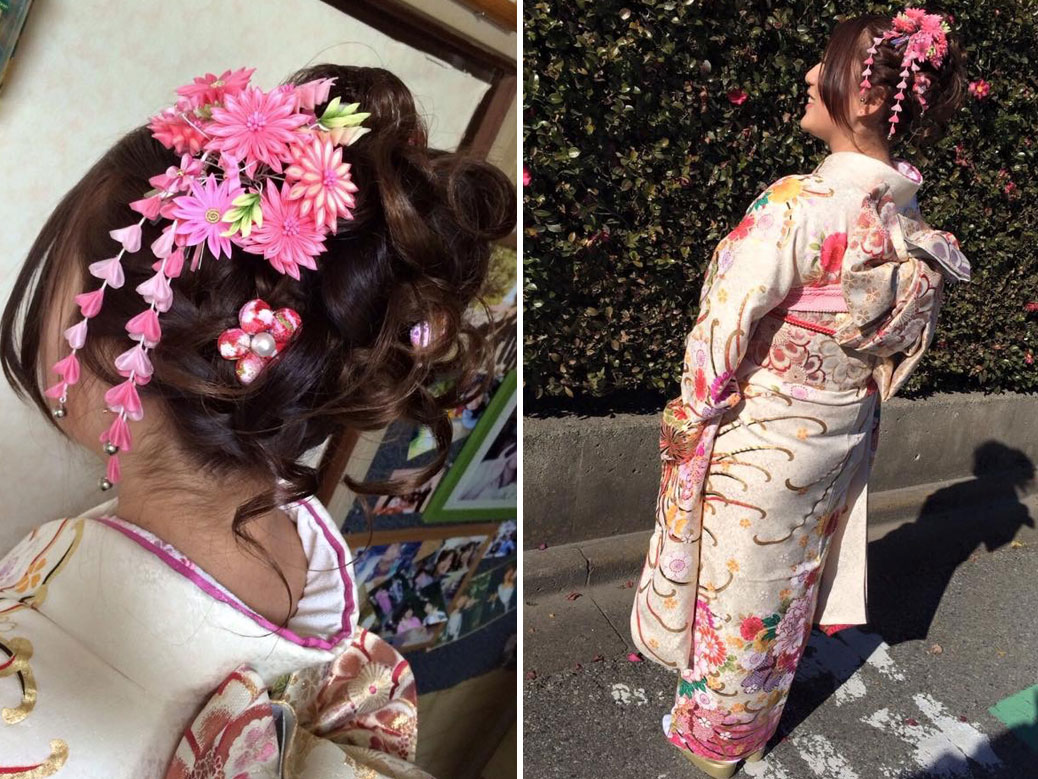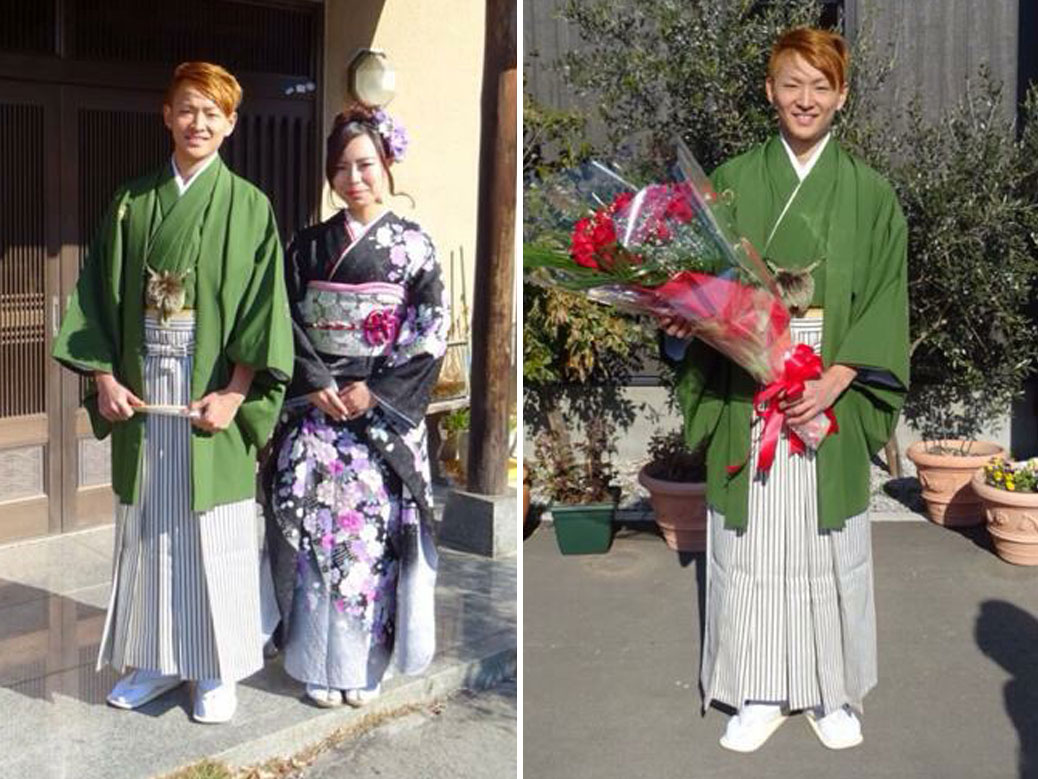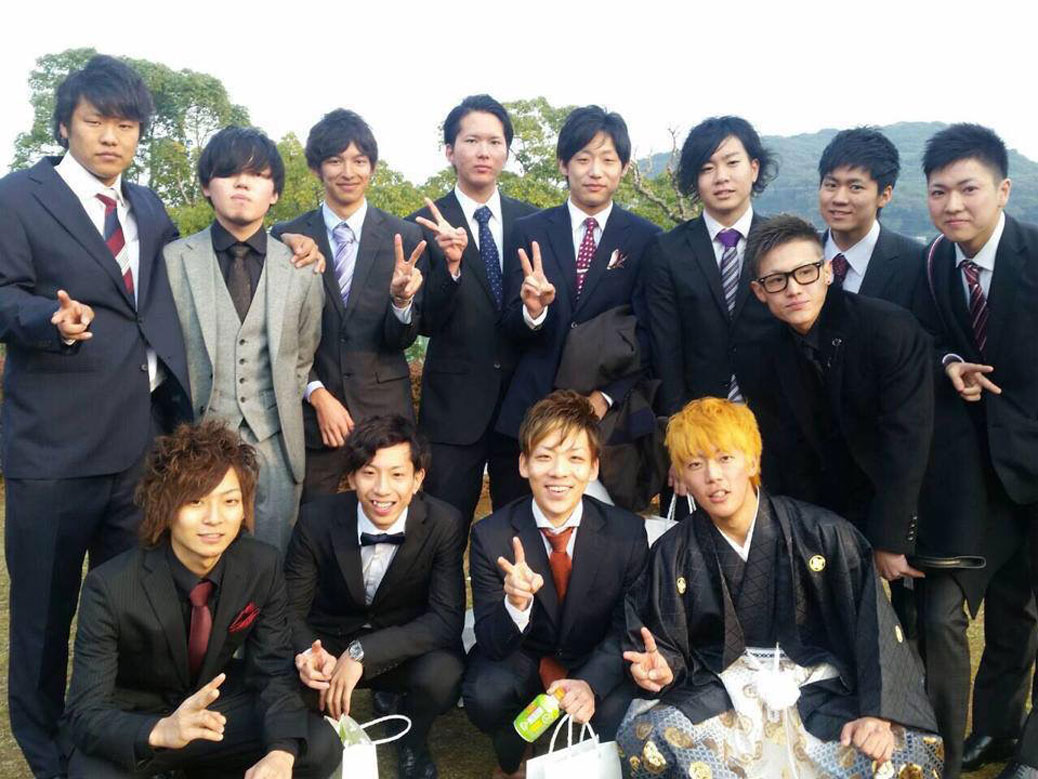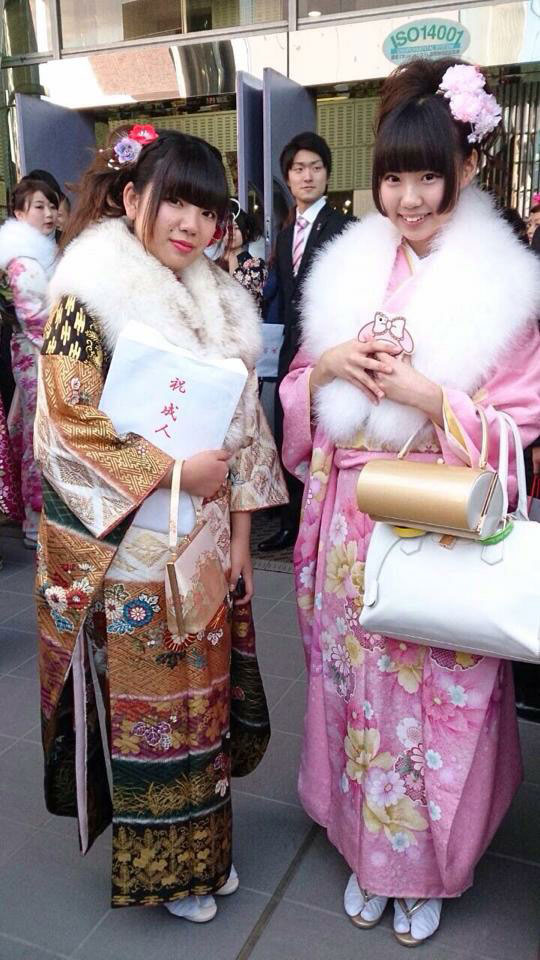Working with young people, I have a chance to hear about some of the “exciting” first rites of passage into adulthood. Students getting their driver’s licenses or first jobs. First forays into drinking, smoking, sex. Forming opinions. Rebellion. Normal teen stuff.
Each culture has its own definitions of the not-so-fine line between childhood and adulthood. But, in the U.S., there’s no official ceremony surrounding it. The closest thing we have is perhaps a “Sweet Sixteen” or the 18th birthday. Latino cultures have the “Quinceañera” for young women at 15 years of age. In Japan, there is a public holiday on the second Monday of January, which is deemed “Coming of Age Day” (Seijin no hi).
In Japan, the legal age of adulthood is 20—for voting, drinking and smoking. For about a year, I’ve been hearing about the preparations for this day from some of our sophomore students at the university. And finally, it was here. My Facebook feed was suddenly flooded with loads of young women in beautiful kimonos and ornate hairstyles.
Japan really is a curious mix of the old and the new. To see young women transformed from their jeans and t-shirts to feminine visions from a past era was fascinating.
I asked a few students to share the significance of this day. Maybe it’s similar to asking an 18-year-old in the states why all of a sudden they can now vote, join the military or get a tattoo. “It’s a tradition,” they say. “We’re now considered adults based on our age.”
The Coming of Age ceremony usually takes place the weekend before or around the official public holiday. Young people who turned 20 after April 2 of the previous year or 19-year-olds who will turn 20 before April 1 of the current year take part in the ceremony. Students traveled across Japan to go home for this occasion.

Women usually go to a shop about a year in advance to be fitted for their “furisode” kimono with all of its intricacies. It’s similar to how women choose a wedding gown. It’s a chance to put your stamp of creativity and stand out in the sea of beauties. The family plays a large role and it’s not a cheap endeavor with kimonos costing in the thousands of dollars (many borrow or rent). Young women wake up early—about 6 a.m.—and go to a special salon that does hair and makeup. There is also someone who helps with fitting the furisode.
At around noon, students join their former junior high school classmates in a public hall for the ceremony. From what I understand, there are many speeches and formalities. Most of the men wear suits and a few wear the men’s version of the kimono, which is called a hakama.

I taught Masaaki when he studied abroad in Oregon (he has now returned to Japan). His appearance stood out to me as he was one of the few who chose to rent a hakama for this day. He said three people had to help him dress in the kimono. “After I wore the kimono, I ate special lunch with my relatives gathered,” Masaaki said.
And after the ceremony? Students have a reunion with their classmates. And, then the parties! And rowdiness! “I had second and third parties. I enjoyed until next morning ‘cause we were legally able to drink alcohol!” Masaaki said.

Shuta is a student at the university. He just turned 20 in October and he traveled two hours by plane to get to his hometown of Isahaya in Nagasaki Prefecture. He wore a suit for his ceremony and he said he didn’t have enough time to rent a kimono. In October, when some of the other students surprised him for his birthday in our class, he said a few words about the significance of 20 and how he must be a man now and take schoolwork and his future seriously.
But when I ask some of my students if they feel like an adult now that they have gone through the ceremony, most of them say not really. Are they ready to vote and form opinions and explore all of the fun and not-so-fun rites of adulthood? Maybe not. And that’s OK. There’s no hurry to grow up.



Last year my oldest had her Seijin-shiki…and last week was my second daughter’s.